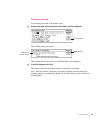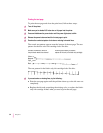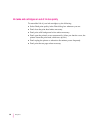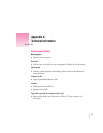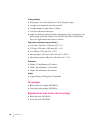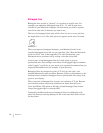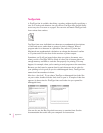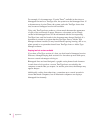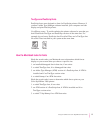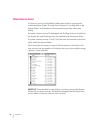
Bitmapped fonts
Bitmapped fonts consist of “pictures” of a typeface at specific sizes. For
example, you might have bitmapped fonts at 10-, 12-, and 18-point sizes
installed in your Macintosh computer. For best results you need a separate
font file for each size of character you want to use.
The icon of a bitmapped font (also called a
fixed-size font or screen font) has
the single letter
A on it. The font’s point size appears at the end of its name.
When you request a bitmapped character, your Macintosh looks for an
installed bitmapped font in the size you specified. (See “How the Macintosh
Looks for Fonts” later in this appendix.) If it can’t find that font, your
Macintosh tries to construct one by scaling a size that it does find.
In most cases, scaled bitmapped fonts don’t look nearly as good as
preinstalled ones. Such scaling is one reason for the jagged edges (sometimes
called “jaggies”) you’ll see on your screen or in a printed document when you
request an uninstalled size (for example, 17-point Geneva).
Bitmapped fonts are designed on grids of 72 dots per inch (dpi)—the
standard Macintosh screen resolution. Because of their correspondence to the
standard screen resolution, bitmapped fonts in preinstalled sizes always look
great on your display.
When you print a bitmapped font, it prints at a resolution of 72 dpi. Because
most modern printers can print at resolutions far better than this (your
Color StyleWriter 2400 prints at 360 dpi), printed bitmapped fonts almost
always have jagged edges or stairstep sides.
Fortunately, the Macintosh can use bitmapped fonts in combination with
other font formats, reserving bitmaps for the screen and other kinds of fonts
for the printer.
72
Appendix B



